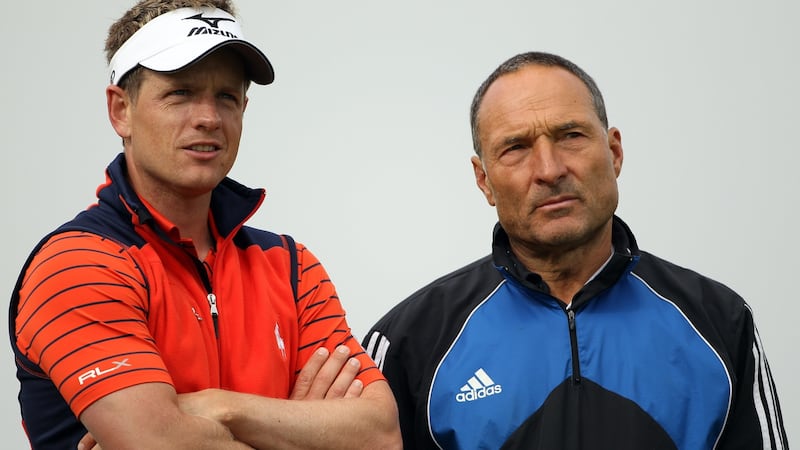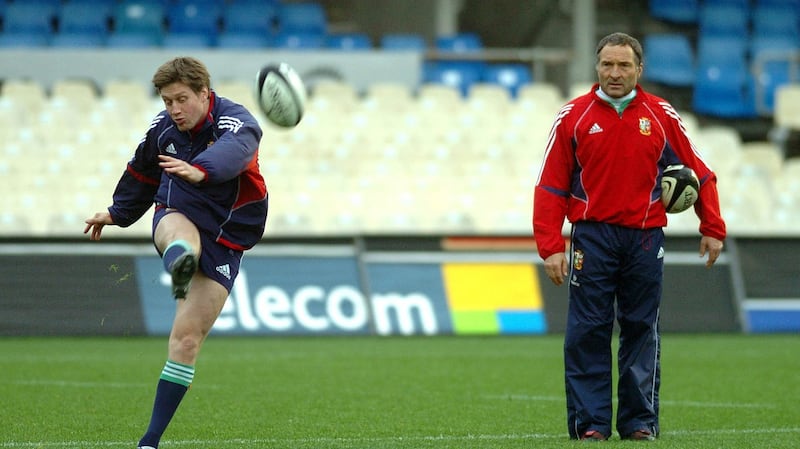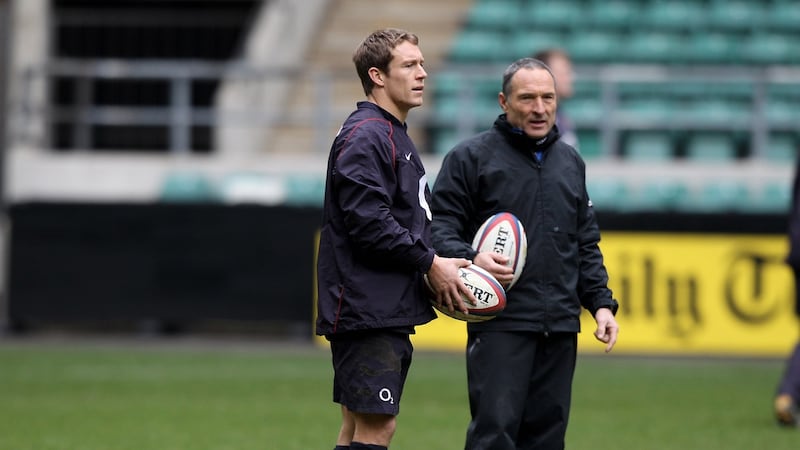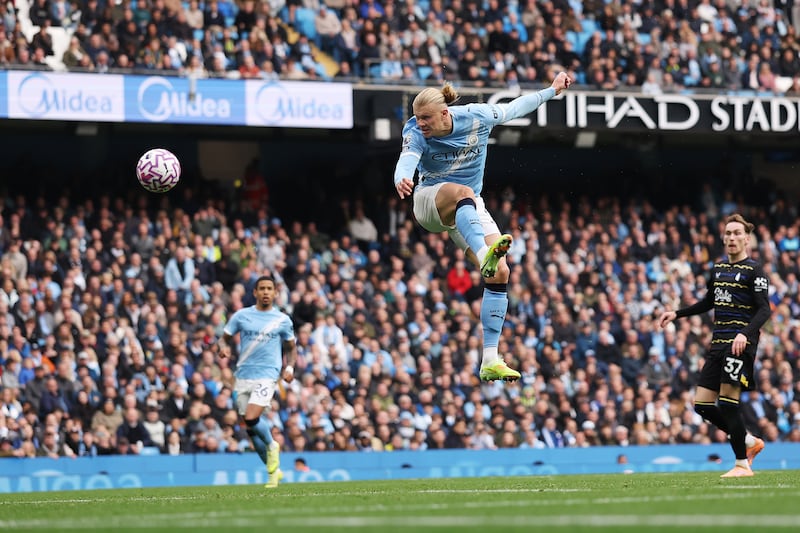What prepares Johnny Sexton and Jonny Wilkinson for a match winning penalty, or gives Luke Donald the mindset and consistency to become the world number one golfer? Leading performance coach Dave Alred has helped some of sport's most successful competitors maximise their skillset, overcome confidence issues, and produce the goods under pressure.
Speaking at an event hosted by sport management agency, Sport Endorse, Alred answered questions from intercounty footballers and rugby players, as well as coaches and representatives from various organisations. All looking to unlock the secrets to peak performance.
“I have this saying I often tell players particularly when there’s a big game,” explains the world renowned coach in relation to building confidence and dealing with pressure. “Make sure you play within yourself. Make sure that when you place the ball that it’s within the environment that you can control. Don’t think I’m going to do the biggest kick now when you’ve never done it before.
“You should always be in a position that there’s nothing I will do today that I haven’t already done. Now that has implications on how you practice, agreed, but at least when you say that and you know that, then you start getting confidence in what you’re capable of doing, because you’ve done it.”
Alred made his name helping to sculpt Jonny Wilkinson’s incredible career but has gone on to individually coach the likes of Sexton, Ronan O’Gara, and more recently Beauden Barrett.

In the past he was involved with both the English rugby and cricket teams, the British and Irish Lions, Manchester City, and golf clients including Donald, Pádraig Harrington and Francesco Molinari. He worked with the Armagh football team in the early 2000s, several top GAA players over the years, and he’s published an award winning book on handling pressure: ‘The Pressure Principle’.
A life spent coaching the best, at the core of the eight principles which guide him is the correct use of language, a strand he explained during his masterclass . . .
“If you go into any changing room in Ireland and you listen to the half time talk you’ll hear things like ‘no dropped passes’. Probably a lot more colourful than that, but all of those are deletions and the brain fundamentally doesn’t work on deletions.
So the guy feels good about something and is prepared to have another go. And that's how you invite somebody into the ugly zone.
“So when you give it just a little bit of thought: ‘let’s make sure every pass goes to hand’. Once you get into negative avoidance ie I’d rather not make a mistake than achieve, that really does cap people’s ability to improve. And then I think sometimes we go into bad patches where we are trying things we are not competent at, trying to do something just so you can get back into the game.
“I don’t want a quick fix when a player has fallen to bits, let’s hang on and look at the whole thing, with what we do well as our starting point. The athlete has to recognise when it’s right, that’s really important, not looking for what’s wrong.
“Then after doing something well, do we congratulate ourselves? We say ‘yeah, yeah that was all right’ and then we beat ourselves up when we slice it. So we need to adjust this - we need our self talk to be, what do I need to do differently from that shot that was sliced, and how good was that one that I nailed with no energy leak? And if you can get that reverse you’ll get a lot more productive individuals and hopefully ones who will enjoy themselves.”
Superficial positivity
On the topic of language Alred is careful to differentiate from a type of superficial positivity.
“People who want to be positive have a lot of positive language: ‘that’s great’, ‘wow’ and all the rest of it. Even if the player knows it wasn’t.
“I want to change positive language to productive language - and productive language goes, that’s good, and why. So if for example you are taking a shot and you hit it with a thin foot and it goes out to the left . . . what I need to do is find out what was right about that first, before I ask you if you could roll your quad around it and get more of your laces on the ball.
“Then we would have been able to collect more of the ball and that wouldn’t have escaped out wide. But your posture was really good, the way your left shoulder was leading was absolutely outstanding.
“So the guy feels good about something and is prepared to have another go. And that’s how you invite somebody into the ugly zone.”
They're going to learn a skill in an environment that's not relevant to the match.
The ugly zone is something Alred references throughout his talk, and his book. The ugly zone is any point where you can’t quite achieve it, requiring an attitudinal change where practice becomes more accountable than the match, so resilience develops and you can cope with a lot more when it happens on the pitch or course.
“A lot of players go, ‘I know I missed but it was only practice.’ Luckily I don’t come across many because if they are like that I don’t really hang around that much. I’m saying no, no no you have to get it right in practice, and actually get it right with a smaller margin than you are going to have to in the game.”

Alred’s beliefs on training were solidified while observing the UK’s royal marines - when preparing to go into combat, they believe if your environment is going to be dynamic and unpredictable then you should have training that is dynamic and unpredictable.
“I think a lot of people look for a steady state to go into competition and my experience is they should look for the opposite. They’re going to learn a skill in an environment that’s not relevant to the match. And that’s quite ruffling the feathers a little bit, but also if the brain is prickly and people are a little bit edgy and a little bit annoyed they are in a far better place to cope with unpredictability then, if everything is, ‘ah I’ve done it.’
“Technically there’s a place to do it, but I would not have that as my, let’s just do that to have some good shots to feel good. Five kicks on my right, five kicks on my left. We always do it. And yet, as soon as that whistle goes all bets are off. It’s totally unpredictable, it’s random, it’s chaotic. So how do we go from order and expect to perform in chaos.
“I was involved with Bath and it was a day when the Auckland grid passing drill was a real big thing in rugby union, which is kind of formation running and passing. And we played against Benetton and the coach there at that time was a guy called Pierre Villepreux - a Frenchman who was way ahead of his time.

“We did this Auckland grid in front of the crowd and they were loving it, balls flinging everywhere and not a dropped ball anywhere. The Italians were down the other end covered in mud, a complete mess. In a tiny square - complete and utter chaos just like kids in a mud bath. By half-time we were 20 points down without touching the ball.”
Inspirational figure
The topics covered during the hour-long event ranged from body language, to mastering self talk and setting expectations - but central to the technical elements of his coaching is an understanding of the centre of gravity.
“Luckily all the sports I’ve worked with, apart from judo, have all involved a ball and either hitting it, kicking it or throwing it. So the basic mechanics of big parts first and then little parts to finish off with is essentially the same and we also know that under pressure the big parts freeze and the little parts take over and that’s how we snatch and speed up and so on.
“I use the awareness of where our body weight is and our centre of gravity is - which is two inches behind your navel. Think of chopping a tree down - you will naturally stand with your navel opposite where you’re going to hit the axe to the trunk. You wouldn’t stand dead in front of the tree because it’s too far away and you wouldn’t stand to the side because the axe would have done it’s fastest bit before hitting the tree.

“I had been looking at baseball and some research into what it takes to hit a home run. Not unlike golf, why can little guys hit a home run? And the issue is how near your centre of gravity is to the impact and hitting the ball. The weight tends to be over impact and that gives a much heavier hit. So you’re hitting with your body weight.
“Around the same time I got involved in Judo, which is essentially tug, pull, push. How do I get someone off their centre of gravity, get my centre of gravity lower than yours, then attack you and throw you. There’s more to it but that’s essentially it. So the awareness of the centre of gravity and how easily you can throw someone in terms of effort - that came into the whole notion of energy leak.”
While this theory is central to Wilkinson’s famed clasped-hands goal-kicking stance, it hasn’t carried as well as the act.
“So you can imagine that whole amalgam of stuff, and I’ll never forget the day we first did it in Middlesbrough in an indoor stadium. So I’m saying to Johnny - I just want you to have a go at this. I want you to kick the ball with your navel and what I mean by that is I want you to just get your navel to go to the ball and then kick afterward and then jog. And we played around with things, and he said well imagine if I had a stake and pushed it in my navel, right I can kind of see that.
“A lot of people have mimicked it since without understanding it, which I have a chuckle about. But it is an issue about centre of gravity over impact on the strike and that’s the crucial bit.”
The rest is history, but for Alred who says if he “was to meet Johnny again, I would do things completely differently”, the learning never stops. For the best, they don’t want it to.
Dr Dave Alred PhD Elite Performance Coach is among the 1,000 plus athletes and coaches on the SportEndorse platform, joined by over 250 brands.



















